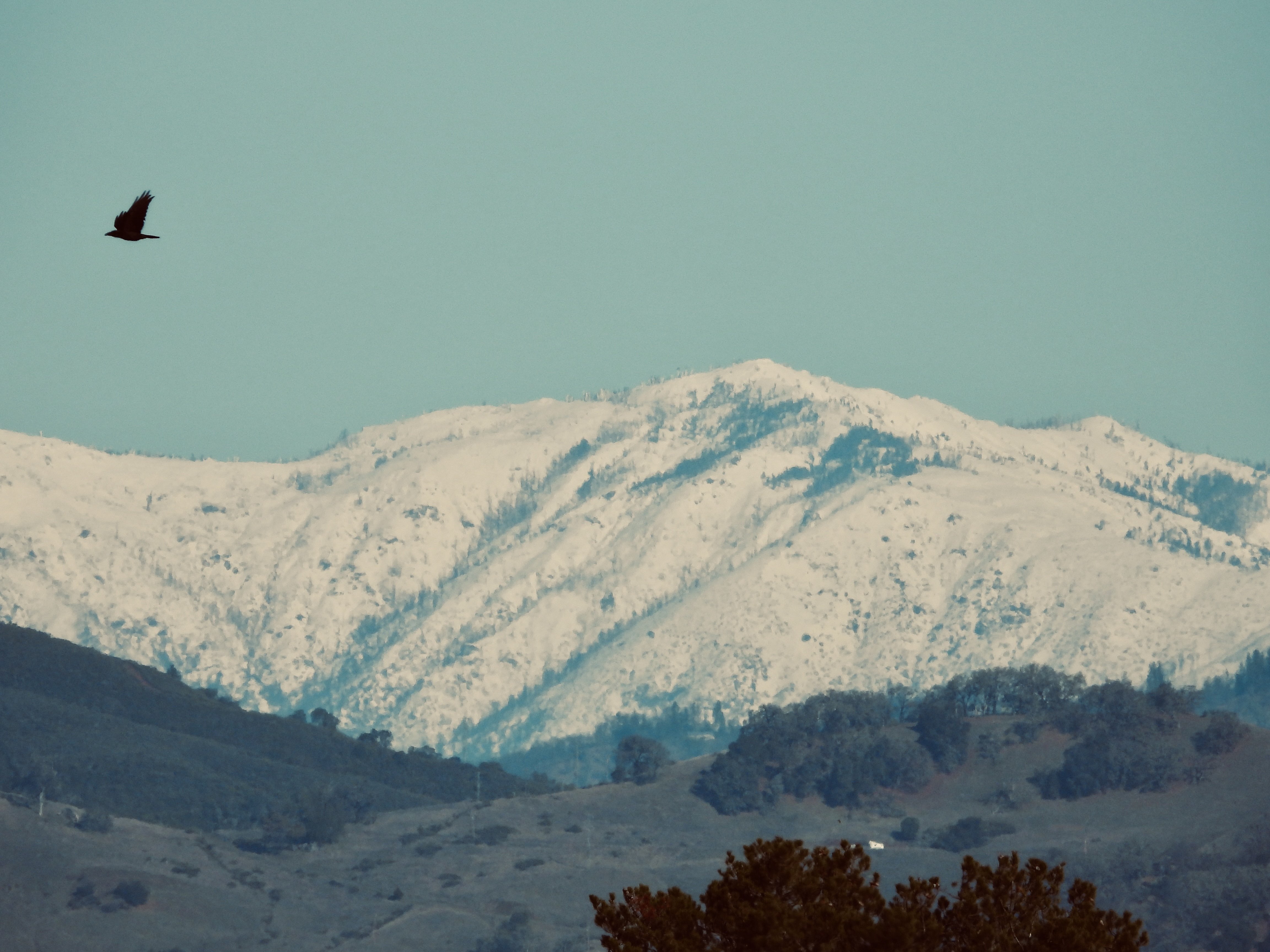
One of the final events of the first North Coast Kelp Fest, which wrapped up this weekend, was an open house at the urchin ranch. It’s a green-painted shipping container in Fort Bragg’s North Harbor, next to a former cafe that’s now the field station of the Noyo Center for Marine Science.

For two months now, captured purple urchin have been fattening up in aquaria, eating kelp pellets donated by The Nature Conservancy and actual kelp that’s being grown in a couple of tanks outside the shipping container.
The urchin are a native species, but their population has exploded in the wake of a disease that started killing off their main predator, the pycnopodia seastar, in 2013. Now they’ve devastated 96% of the kelp, which is also the main food source for red urchin and for abalone, formerly one of the most lucrative fisheries on the north coast.
The idea of the urchin ranch is to see if it’s possible to round up the now-starving urchin, get them into an edible condition, and market them. In this scenario, humans replace the pycnopodia seastar as the urchin’s most relentless carnivore. If it works, the ecosystem will be restored, and the economy will get a boost.

Richard Millis is the field station manager at the urchin ranch. He loves to point out how beautiful the creatures in his care are, with delicate hair-fine feelers known as tube feet among their purple quills. Each tiny feeler has a suction cup it uses to attach to a surface, or walk a food item across its quills to its mouth, which is an intricate, powerful trap with five teeth that can tear through rock, wood, plastic, and, in some instances, one another. “They do tend to do a little cannibalizing,” Millis admitted. “We’ve seen it in our system a little bit. I’ve seen it in the intertidal. I don’t know if it’s just that certain ones like to eat other ones, or if it’s an acquired taste.”
Due to a biological quirk that allows them to stay dormant for a fantastically long time, it is just about impossible to starve an urchin to death. The urchins mostly come from the intertidal zone, or the ‘barrens,’ where there is no kelp and the sea floor is covered with starving urchin. “We bring them in and they’re quite empty,” Millis reported, adding that so far, the system seems to be going smoothly. “Our general rates of mortality are down really low now, and things seem like they’re going in a good direction.” He says the urchins are not being sold at the moment. “It’s mostly to educate people that we have something out here that you can eat,” Millis explained; “that is overpopulated. It’s a restorative seafood product, because if you take it out of the environment, it’s helping the environment.”
Sarah Grimes, the stranding coordinator for the Noyo Center, was outside using a specialized pair of pliers to help the urchin make their way along the food chain. Conditions may be improving, even in the wild. Grimes said that just since the beginning of June, she’s found some purple urchin in the wild that have been “pretty plump.”

Like sea stars, sea cucumbers and sand dollars, urchins are echinoderms, with a five-point radial symmetry. That means that, in addition to the five teeth of their mouth, called an Aristotle’s Lantern for the ancient naturalist’s description, they have five sections of uni inside their bodies.
Grimes advised visitors to get a fishing license, observe tide pool etiquette by not stomping on everything, “and then crack open a purple urchin…It’s salty, and then it explodes with sweetness.” Assessing a pinky finger-sized piece of uni she held in a shell with one hand, she said, “I would throw that on an arugula salad, squeeze some lemon on it, and eat it.”
Dave Rudie processes urchin on a much larger scale. He’s a partner in Pacific Rim Seafood, which is located right there in the north harbor. He’s also chairman of the California Sea Urchin Commission. “If they’re full of uni, it’s perfectly marketable,” he said. “I’ll buy the purple urchins if they have uni in them.” Though the urchin ranch is still in the experimental phase, he believes “It has the potential of expanding to the point where it could be a viable business.” He mentioned Urchinomics, a company in Southern California that is buying purple urchins from divers, and working to make it a commercial venture “that’s hopefully profitable, but it’s a big investment, with equipment and leases and food for the urchins and paying the divers. So it’s still an unknown if it can be viable, commercially.”
Purple urchin, which are typically a shallow-water species, are starting to move into deeper water and overlap with the red urchin, though they haven’t been seen much deeper than 80-100 feet. The Commission is trying to get more areas opened to harvesting red urchin in otherwise protected marine habitat, including a stretch between Point Arena and Bodega Bay. Rudie argues that this would reduce the pressure on the kelp, which might have a chance at a comeback if the ocean cools down with the coming La Nina.









nothing better than some uni whipped into butter, garlic and put on pasta
Shades of Mama Carine’s recipe.